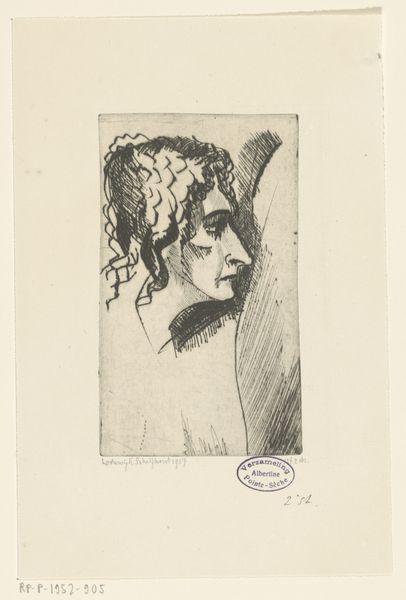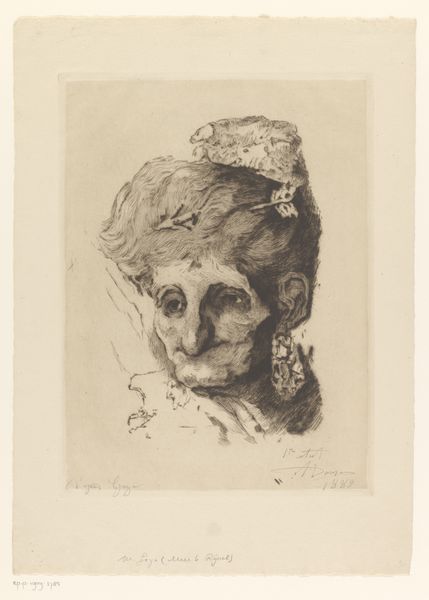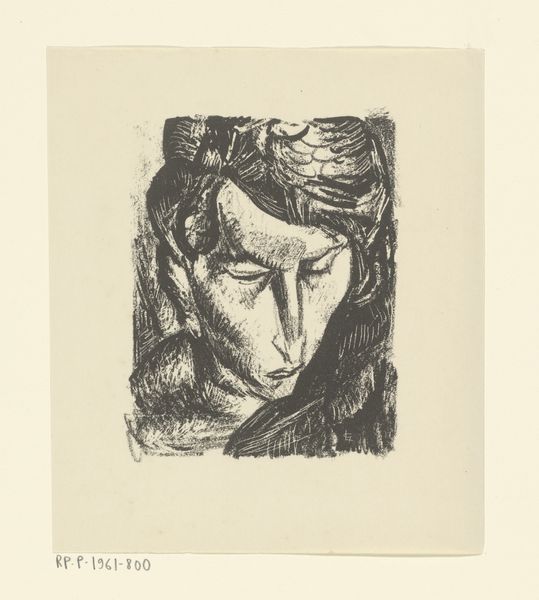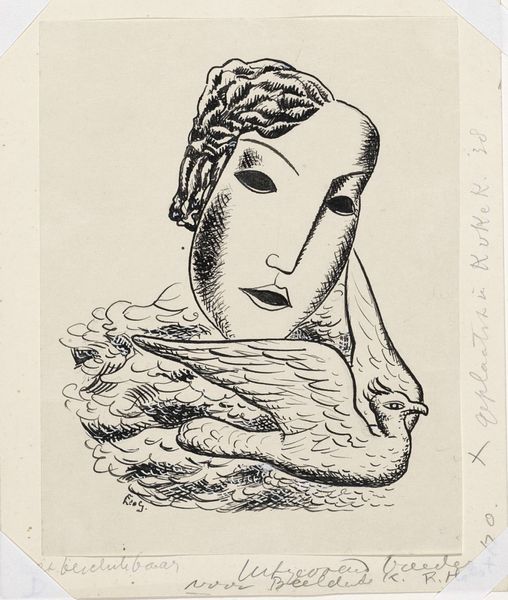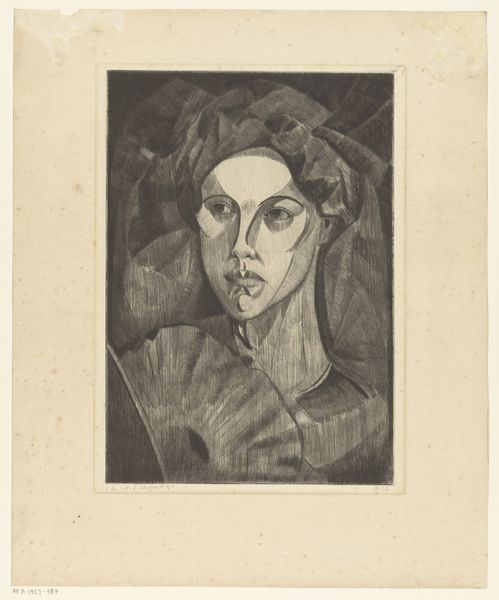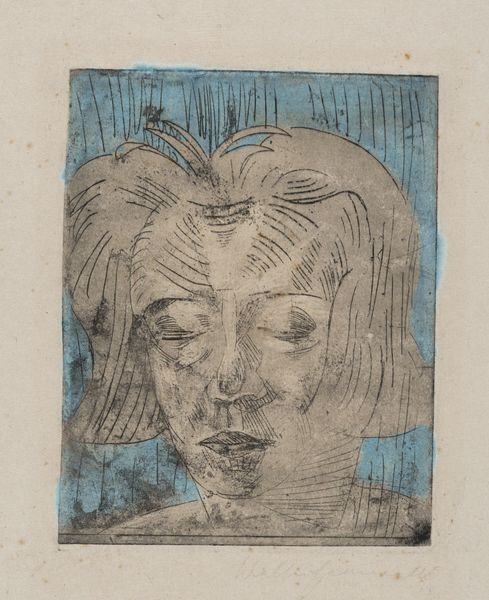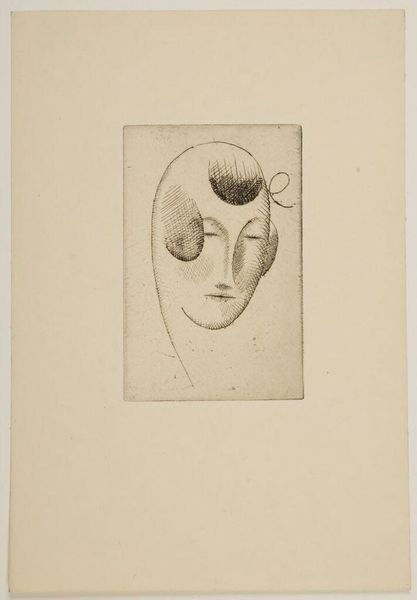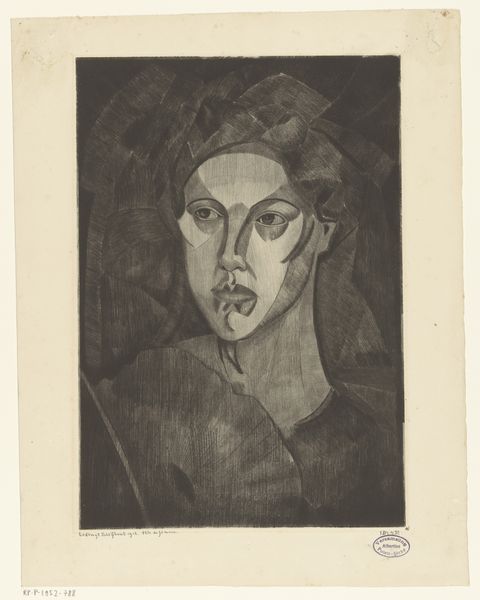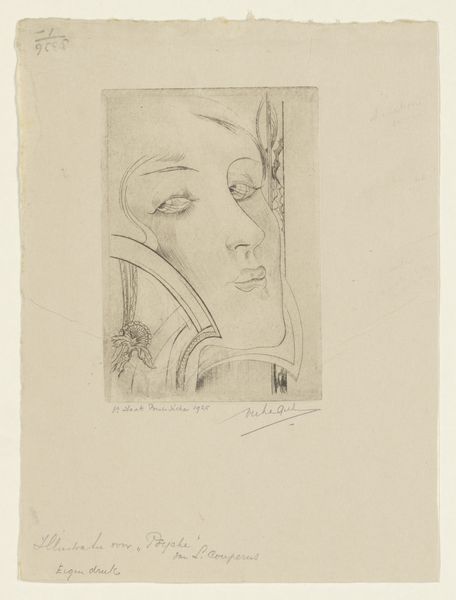
drawing, print, ink
#
portrait
#
drawing
#
art-nouveau
#
self-portrait
# print
#
pencil sketch
#
figuration
#
ink
#
line
#
modernism
Dimensions: height 228 mm, width 160 mm
Copyright: Rijks Museum: Open Domain
Curator: We're standing before "Portret van een onbekende vrouw," a work attributed to Leo Gestel, created sometime between 1891 and 1941. It's a drawing, made with ink and pencil. Editor: The starkness grabs me first. The contrast is quite powerful, giving the figure a somber, almost theatrical air. Curator: I'm intrigued by the symbolism of the closed eyes. Is it peaceful reverie, perhaps a subtle commentary on inner contemplation, or is it connected to broader art nouveau conventions around dream states and spiritualism? Editor: Considering the materials, the print quality appears intentionally rough. You see the texture of the paper, the varying pressure of the pencil. It makes me wonder about the artist's hand, the specific tools used and how that informs the mood we’re sensing. Was this a quick sketch, a study? Curator: It's signed as "Leo Gestel" yet named, "Portrait of an unknown woman", adding mystery about subject and meaning. I see a hint of the modernist interest in simplified forms, but there's still a strong connection to earlier portrait traditions. Editor: Do you think that choice of anonymity adds to our interpretations? By not tethering it to a specific identity or commission, is the artist perhaps commenting on how we consume portraits? The very concept of capturing or consuming faces as images. Curator: That is thought-provoking. It could challenge our contemporary focus on celebrity culture. Perhaps Gestel wanted us to see beyond a recognizable face and confront universal human emotions, even archetypes. Editor: There is also the cost, time, skill and equipment involved. Even now the artist's ability to conjure emotion with limited and perhaps discarded supplies is compelling. Curator: Indeed, from that angle, the work serves as an insightful demonstration about the intrinsic power of material expression stripped down to bare essentials. Editor: It's more engaging on reflection, considering its history as a means of display in Rijksmuseum but stripped back to materials which carry equal significance as process rather than object. Curator: I find that the emotional weight and suggestive symbolism resonates over time; Gestel speaks to us today as powerfully as he did back then.
Comments
No comments
Be the first to comment and join the conversation on the ultimate creative platform.
